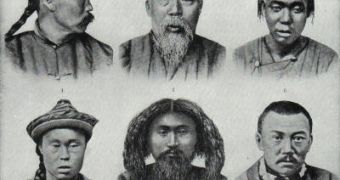According to a new scientific study, people of Asian descent are much less able than European races to accurately determine the differences in facial features of people expressing fear versus surprise, or disgust versus anger. The new report, which was published online on August 13th in the Cell Press publication Current Biology, also shows that Easterners lack this ability because they tend to concentrate their attention on a person's eyes, rather than “scanning” over all facial features, as Westerners do.
“We show that Easterners and Westerners look at different face features to read facial expressions. Westerners look at the eyes and the mouth in equal measure, whereas Easterners favor the eyes and neglect the mouth. This means that Easterners have difficulty distinguishing facial expressions that look similar around the eye region,” explains University of Glasgow expert Rachael E. Jack.
The find implies that even the most basic expressions cannot be trusted to carry emotions between people involved in cross-cultural situations. This hints at the fact that human emotion communication may be more complex than experts were led to believe in previous investigations.
In the UG experiments, 13 Western Caucasian and 13 East Asian people had their eye movements recorded, as they watched facial expressions on a computer screen, and cataloged them as being happy, sad, surprised, fearful, disgusted, angry, or neutral. The established Facial Action Coding System (FACS) was used to ensure that the expressions were standardized. That is to say, each of the images showed an expression featuring a certain combination of contracted or relaxed muscles, associated with a certain expression.
“In sum, our data demonstrate genuine perceptual differences between Western Caucasian and East Asian observers and show that FACS-coded facial expressions are not universal signals of human emotion. From here on, examining how the different facets of cultural ideologies and concepts have diversified these basic social skills will elevate knowledge of human emotion processing from a reductionist to a more authentic representation. Otherwise, when it comes to communicating emotions across cultures, Easterners and Westerners will find themselves lost in translation,” the researchers write in their study.

 14 DAY TRIAL //
14 DAY TRIAL //